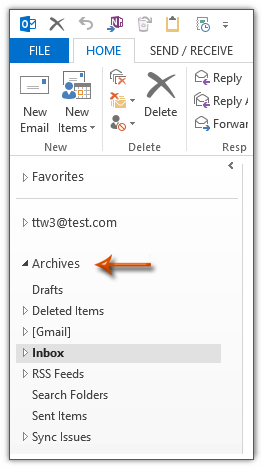

- #Archive from outlook web app manual#
- #Archive from outlook web app archive#
- #Archive from outlook web app pro#
- #Archive from outlook web app free#
This way you can have separate PST files for each account and use them independently.
#Archive from outlook web app pro#
PST Splitter Pro has an option to split data by accounts. In some cases the data of several Outlook accounts is kept in a single PST file.


#Archive from outlook web app archive#
It is easy to access and find items you need from an archive when you have different PST files for each folder. Archive data of old projects and keep them separately archived instead of having everything in Outlook. Organize your data by splitting selected folders to different PST files. Split specified folders and subfolders to the separate data files.*.Select a custom size of files you want to get in the end or choose to split files to fit in 2GB limitation automatically. Use PST Splitter Pro to split Outlook PST files by size. Choose a time interval from the drop-down list or select specific “from” and “to” dates. The PST Splitter Pro Edition gives you an option to split PST files manually.
#Archive from outlook web app free#
Outlook data can be split by date automatically using the Free version. split the file by specified date, then choose another criteria such as folder or size and repeat the process. The ways to split files can be combined, e.g. The PST Splitter Pro Edition enables you to split PST files manually according to different criteria and filters.
#Archive from outlook web app manual#

You can easily connect the split PST file to Outlook and access all items in an unchanged form. None of the data will be harmed during this procedure. Data is moved to a new PST file, which is independent and native to Microsoft Outlook. Schedule automatic archiving by date and you can completely forget about it. PST Splitter is a free tool to split and archive Microsoft Outlook data automatically. You can easily open PST files without Microsoft Outlook using OST PST Viewer tool. The best solution in this case is to automatically split the PST file into smaller Outlook data files and move them to separate Archive files accessible from Microsoft Outlook. Large PST files slow down Outlook’s performance and it is hard to stay productive with slow loads of data and avoid constant PST corruption. If you are Microsoft Outlook user for a long time, you know how frustrating it can be to deal with huge amount of data.


 0 kommentar(er)
0 kommentar(er)
